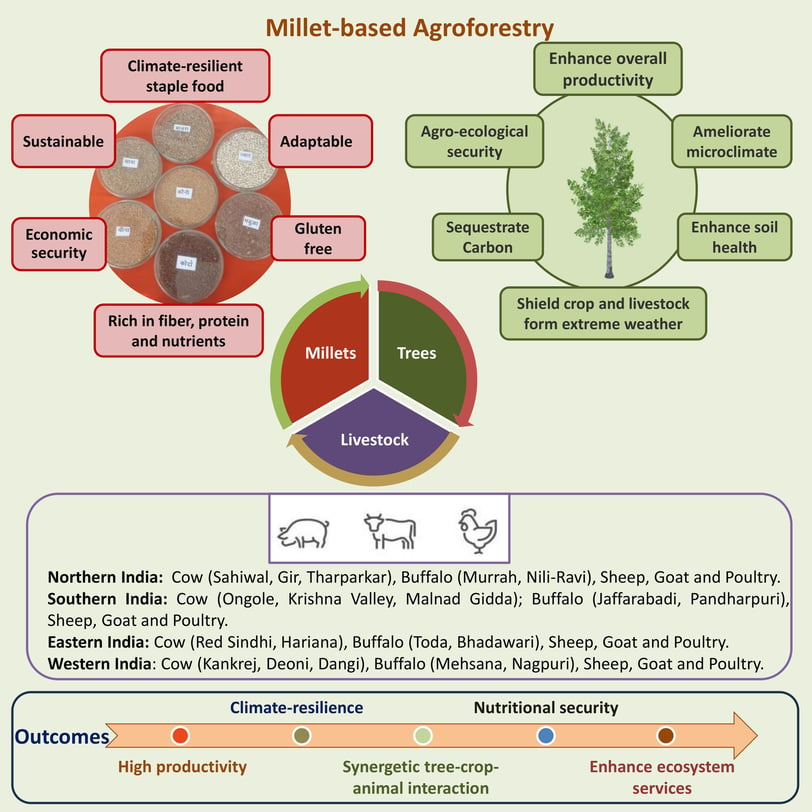Millet-Based Agroforestry: A Nature-Positive Farming to Achieve Climate-Resilience and Food Security
To address these emerging issues, millets can be incorporated in the agroforestry system to promote efficient resource management and reduce malnutrition, food insecurity, and impact of climate change. Interestingly, empirical evidence showed that farmers are switching from conventional monoculture to sustainable cultivation practices like agroforestry, climate resilient agriculture, and organic farming. This is due to higher intermittent yield, increased production, lower crop failure, higher crop diversity, and efficient site utilization through tree-crop multi strata arrangements. The compatible tree species, congruous crop combinations, and effective competition management techniques must be chosen in these resource-poor arid and semi-arid regions to effectively manage soil and water resources. In the present study, the decision to choose India and Africa was influenced by three key features: the presence of some successful MbAF models in both regions, millet production together accounts for 80 % of global production, and the prevalence of malnutrition despite high production. Therefore, this article discusses the significance and potential of MbAF in these areas, considering the "International Year of Millets-2023", highlighting region-specific successful MbAF models.
Dinesha S and Shridevi B. Teli

